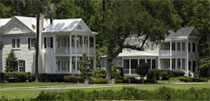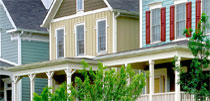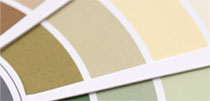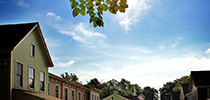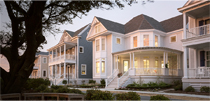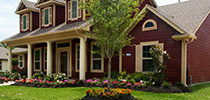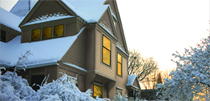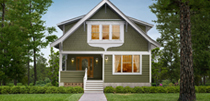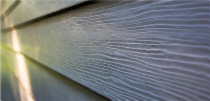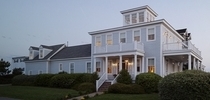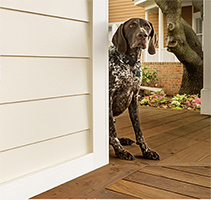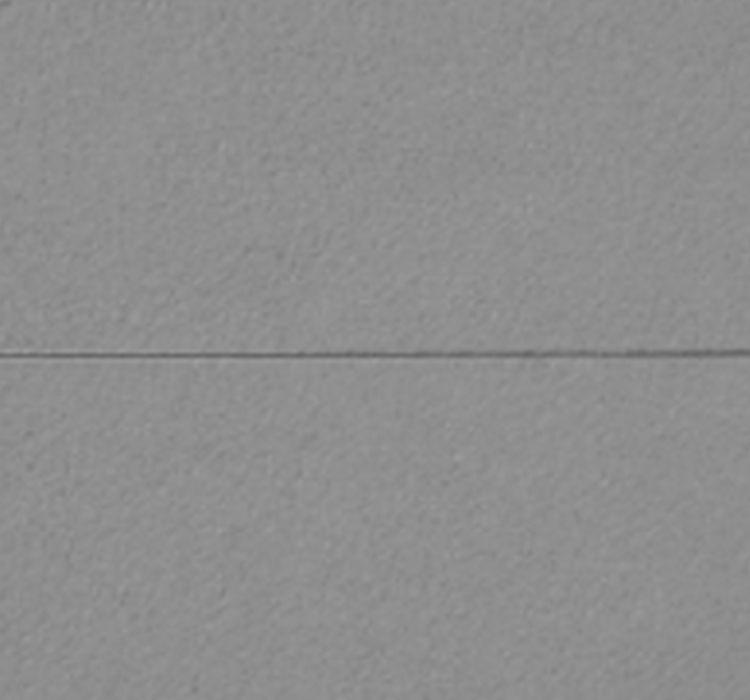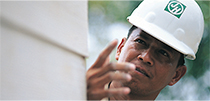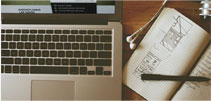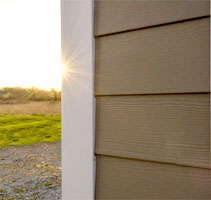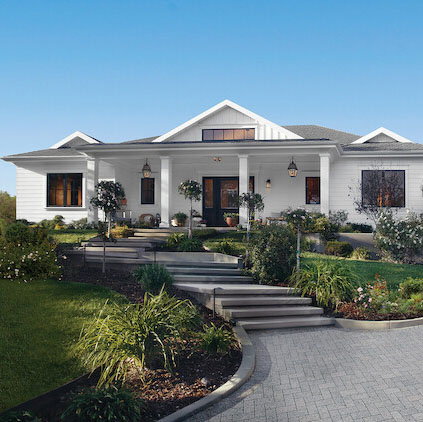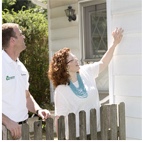When building or remodeling a home, one of the many important decisions to be made is which exterior siding to use. Here, we will be comparing vinyl siding to Hardie® fiber cement siding.
Introduced in the 1960s, vinyl was created as an alternative to aluminum siding. While it certainly has plenty of merits in comparison to aluminum, vinyl siding also has a number of limitations. To start, vinyl can become more brittle with age and exposure to the elements. It can be damaged by wind debris, hail or any number of other external forces and may crack, buckle and warp with changing temperatures. By contrast, Hardie® fiber cement siding is more durable and up to 5x thicker than vinyl siding. It easily stands up to the elements, resisting damage from wind, rain, freezing temperatures and hail, and gives homes years of protection with low maintenance.
HARDIEPLANK SIDING
|
VINYL SIDING
|
|
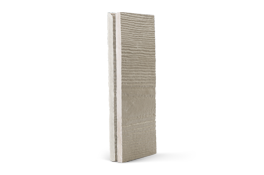
|
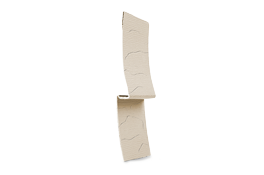
|
|
5x thicker than vinyl siding products, providing authentic shadow lines and wood grain texture
|
At 0.05 inches thick, vinyl siding lacks an authentic wood appearance
|
HARDIEPLANK SIDING
|
VINYL SIDING
|
|
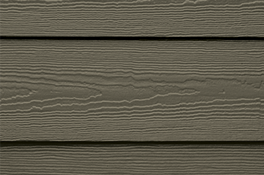
|
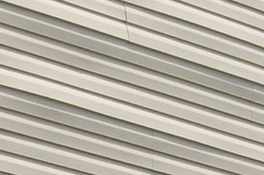
|
|
Resists damage from wind, rain, freezing temperatures and hail
|
More affected by elements; less resistant to high winds, temperature extremes and hail*
|
HARDIEPLANK SIDING
|
VINYL SIDING
|
|
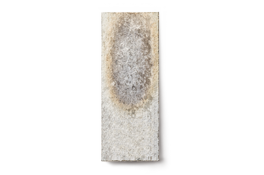
|

|
|
Noncombustible and resists damage from extreme heat**
|
Vulnerable to melting caused by flame, grills and solarheat reflected off Low-E windows**
|
HARDIEPLANK SIDING
|
VINYL SIDING
|
|
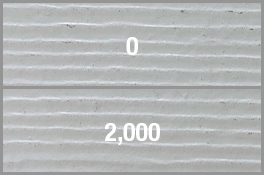
|

|
| Hours of UV light exposure |
|
ColorPlus Technology finishes provided superior color consistency and fade resistance*†
|
Inconsistent: can fade at noticeably different rates, creating color inconsistency*†
|
Additionally, vinyl siding is predisposed to warping due to heat. This type of damage can be caused by a summer heat wave or simply sun exposure over time. Vinyl siding can even melt from the sun’s reflection off of a nearby Low-E glass window. This vulnerability affects the appearance of a house (warped siding doesn’t do much for curb appeal), but vinyl siding can also put a home in a precarious position – especially when there is a fire.
When exposed to a direct flame, vinyl siding quickly melts. Hardie® siding, however, resists damage from extreme heat and will not ignite when exposed to a direct flame, nor will it contribute fuel to a fire. In fact, because James Hardie's portfolio of fiber cement products are non-combustible, many insurance companies will offer a discount on coverage for homes that utilize Hardie® siding.
Aside from being more durable and longer lasting, James Hardie brand products are also a great way to boost the curb appeal of a home.Y The design possibilities are endless with James Hardie’s collection of products, profiles and colors.
Being a fiber cement product, it is thicker and can better mimic various textures, meaning that if you want the aesthetic of a different siding – like wood – without any of the shortcomings, James Hardie is an excellent choice.
Hardie® siding and trim can come primed and ready for painting, or you can invest in ColorPlus® Technology. The pre-finished process involves baking the color onto the product, allowing for a vibrant and long-lasting color that resists chipping, peeling, cracking and the UV rays that cause vinyl and field applied paint to fade. Even better, the ColorPlus Technology finish comes with a 15-year limited warranty that covers paint and labor costs.
Between offering greater durability, better protection, an elevated aesthetic, and the added potential of ColorPlus® Technology benefits, it’s clear that Hardie® siding is the superior choice for home exteriors.
*Visual representations based on James Hardie research and testing.
**Hardie® siding sample was exposed to a blowtorch for 90 seconds. Vinyl siding was exposed to heat of 140 degrees F for 30 seconds.
†Within a controlled lab environment, samples were exposed to QUV test for 2,000 hours under ASTM G154-12a, simulating 2 years of natural exposure.

